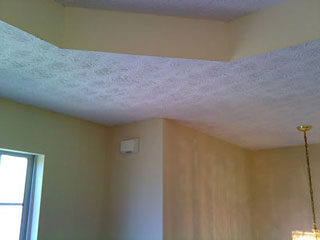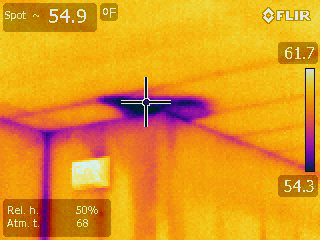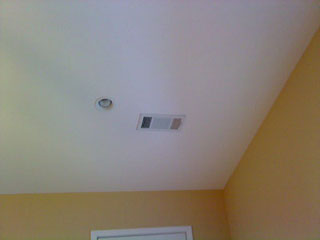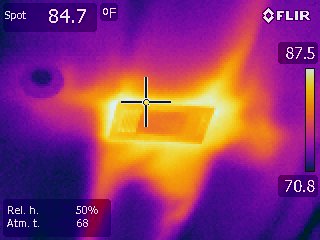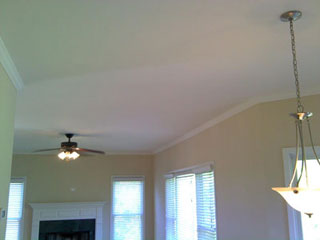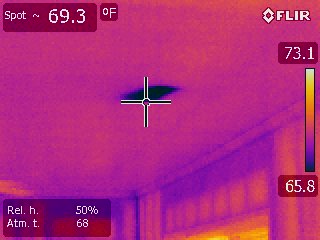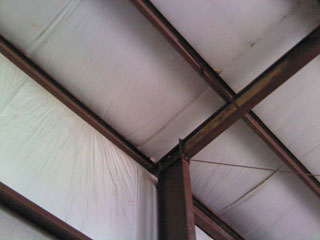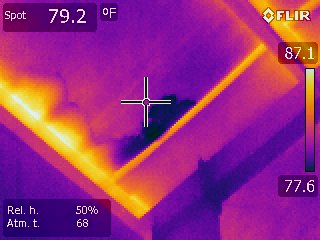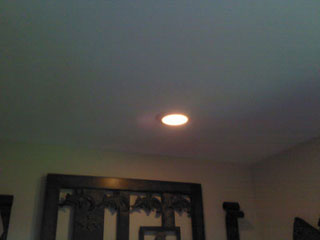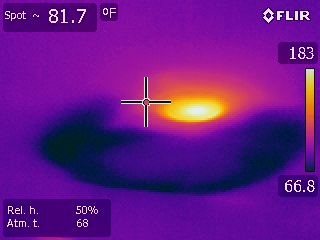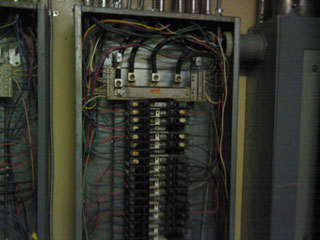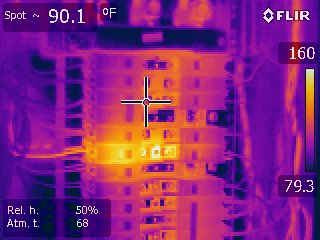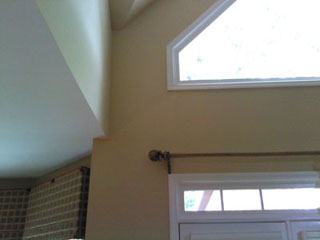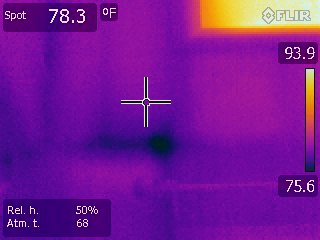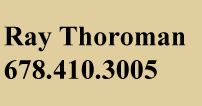Detect insulation leaks in refrigeration equipment
Thermal Imaging Camera Limitations
Because thermal energy can be reflected off shiny surfaces, thermal imaging cameras can not see through glass. If you stand in front of a window while looking at a thermal imaging camera, you will see yourself in the window because of the thermal energy reflecting off the glass. Thermal imaging cameras can not see through walls and its not x-ray vision! It is also important to know that thermal imaging cameras should not be used as the deciding factor that a problem exists. We must use other inspection eqiupment such as a borescope, eyes or moisture meter should always be used to confirm the problem. This is where training and experience are crucial for the inspector using the equipment to interpret the images.
Commonly Asked Questions
Q. Can thermal imaging cameras see through walls?
A. No! While hi-resolution and hi-sensitivity cameras can create the appearance of seeing through walls, what you are actually seeing is transmitted thermal energy. For example, if you look at the interior walls of a home when it is cold outside, you will likely see the studs in the wall. What is showing on the surface is cold transmitted from the outside, through the studs, to the surface of the drywall. It appears that you can see into the wall, but you are actually only seeing the different temperatures on the surface.
Q. Can thermal imaging cameras detect plumbing leaks?
A. Yes. Thermal cameras are a useful plumbing leak locator. Most cameras have a temperature difference sensitivity of .10 degree Centigrade or better. It doesn't take a big temperature difference for the camera to see the leak. The issue is allowing that thermal energy difference enough time to transfer through the flooring to the surface.
Q. Can thermal imaging cameras detect air leaks?
A. Yes. Similar to plumbing applications, this ties directly to the camera sensitivity. Because the temperature change required is so slight, you can detect draft areas around doors, windows, and attic access points.
Q. Can thermal imaging cameras detect moisture?
A. Yes. Moist materials retain thermal energy differently, allowing the camera to pick up the differences. Its important to understand we always double check a potential spot of moisture with a moisture meter since there are several things that can create the thermal anomaly you are seeing.
